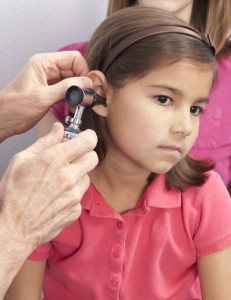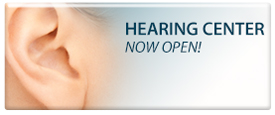Hearing loss is the most common birth defect amongst children in the U.S.

Pediatric hearing screenings are the best way to identify hearing loss in children of all ages. There are several helpful tests we can perform in order to diagnose hearing problems in children. These hearing tests don’t just identify permanent hearing loss; they’re also helpful in recognizing temporary hearing problems that can cause significant issues in the future if left untreated.
Infant Hearing Screenings
Infant hearing screenings are typically performed at the hospital within a few days of a baby’s birth. These screenings are preliminary tests that are used to determine if a baby would benefit from a more in-depth hearing evaluation. To get a better understanding of infant hearing loss and screenings in America, take a look at these statistics:
- 95% of babies receive an newborn hearing screening in the hospital
- 2–10% of babies show signs of hearing loss during a newborn screening
- Only 54% of those children actually receive a recommended complete hearing evaluation exam
- 3% of babies have a permanent hearing loss
- 94% of these infants are born to parents with normal hearing
- 4–11 of every 10,000 babies suffer from early-onset deafness
The Importance of Newborn Hearing Screenings
Hearing infections and other temporary problems are highly prevalent in children. While these conditions are usually easy to treat, they have to be identified first. Without proper treatment, temporary hearing infections and other illnesses related to the ears can actually result in permanent hearing damage.
Babies and toddlers are in a constant state of observation, learning and development. Hearing loss at this age can impede a lot more than just language development—it can prevent the normal progression of social skills, learning abilities, behavioral growth and more. Untreated hearing loss in infants and toddlers can have negative impacts throughout childhood and even adulthood.
Pediatric Hearing Tests
Since we often test children’s hearing abilities before they can communicate effectively, certain hearing tests are better than others. We’ll determine which hearing tests are right for your baby, infant or child based on your family’s individual case and needs. While pediatric hearing tests are easy and painless, they can still be difficult on young children. You should expect to work with us to make the process as simple and effective as possible.
The most commonly used pediatric hearing tests are:
- Auditory Brainstem Response (ABR) hearing test: During this test, electrodes attached to your child’s earlobes, scalp and head measure the auditory system’s response to sounds administered through headphones.
- Tympanometry examination: This eardrum and ossicles assessment tool measures the middle ear’s movement and activity in response to changes in air pressure delivered to the ear.
- Otoacoustic Emissions (OAE) hearing test: Otoacoustic emissions are the echoed vibrations that come out of the ear after sound goes in. OAE tests measure these emissions using a probe that contains both a microphone and a speaker.
- Middle Ear Muscle Reflex (MEMR) hearing test: This test uses a small, rubber-tipped instrument to deliver a series of sounds that typically trigger responses in patients with normal hearing. The child’s response levels are measured and recorded.


